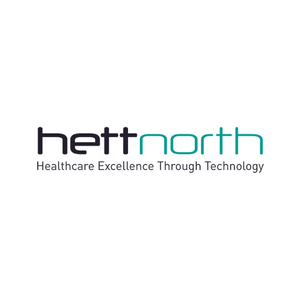In an era dominated by digital advancements, the healthcare sector has undergone a profound transformation, leveraging technology to enhance patient care, streamline processes, and facilitate data-driven decision-making. However, this digital evolution has also brought about new challenges, particularly in the realm of cybersecurity. This blog serves as an essential guide to understanding and implementing robust cybersecurity measures in the healthcare industry.
The Growing Threat Landscape
Rise in Cyber Attacks:
Healthcare organisations have become prime targets for cybercriminals seeking to exploit vulnerabilities in digital systems. The motives behind these attacks range from financial gain through ransomware to the theft of sensitive patient information for illicit activities.
Data Breach Consequences:
The consequences of a data breach in healthcare are severe and far-reaching. Beyond the potential financial losses, organisations risk damage to their reputation, legal ramifications, and, most critically, the compromise of patient safety and privacy.
Understanding Cybersecurity in Healthcare
Comprehensive Risk Assessment:
The first step in establishing a robust cybersecurity strategy is conducting a comprehensive risk assessment. This involves identifying and evaluating potential threats, vulnerabilities, and the impact of a security breach on patient care and organisational integrity.
Data Encryption:
Data encryption is a fundamental component of healthcare cybersecurity. Encrypting sensitive patient data ensures that even if unauthorised access occurs, the information remains unreadable and unusable without the decryption key.
Endpoint Security:
Given the proliferation of connected devices in healthcare, securing endpoints is critical. This includes not only computers and servers but also medical devices, wearables, and any device that interacts with the healthcare network. Endpoint security measures, such as robust antivirus software and regular updates, are essential.
Employee Training and Awareness:
Human error is a significant factor in cybersecurity breaches. Training healthcare staff to recognise phishing attempts, following secure password practices, and promoting a culture of cybersecurity awareness are crucial elements in fortifying the human firewall.
Essential Cybersecurity Measures
Access Controls and Authentication:
Implementing stringent access controls ensures that only authorised personnel can access sensitive information. Multi-factor authentication adds an extra layer of security, requiring multiple forms of verification for access.
Regular Software Updates and Patch Management:
Keeping all software, including operating systems and applications, up to date with the latest security patches is imperative. Cybercriminals often exploit vulnerabilities in outdated software to gain unauthorised access.
Network Segmentation:
Segmenting the healthcare network into isolated sections enhances security by containing potential breaches. If a breach occurs in one segment, it doesn't automatically provide access to the entire network.
Incident Response Plan:
Developing a comprehensive incident response plan is essential. This plan should outline the steps to be taken in the event of a security breach, including communication strategies, containment measures, and recovery protocols.
Benefits of Robust Cybersecurity in Healthcare
Patient Trust and Confidence:
A healthcare organisation that prioritises cybersecurity instills trust and confidence in its patients. Knowing that their sensitive information is secure encourages patients to engage with digital healthcare services without fear of privacy breaches.
Operational Continuity:
Cybersecurity measures contribute to the operational continuity of healthcare services. Protecting against ransomware and other cyber threats ensures that critical systems remain operational, minimising disruptions to patient care.
Protection of Intellectual Property:
Beyond patient data, healthcare organisations often possess valuable intellectual property, including research findings and proprietary medical technologies. Robust cybersecurity safeguards these assets from theft and unauthorised access.
Future Trends in Healthcare Cybersecurity
Artificial Intelligence and Machine Learning:
AI and machine learning are becoming integral tools in identifying and responding to cybersecurity threats. These technologies can analyse vast amounts of data to detect patterns indicative of potential security breaches.
Blockchain Technology:
Blockchain's decentralised and secure nature holds promise for enhancing data integrity and authentication in healthcare. It has the potential to prevent tampering with patient records and ensure the traceability of medical data.
The Future of Cyber Security in Healthcare
The landscape of cybersecurity in healthcare is dynamic and evolving. As healthcare organisations continue to embrace digital transformation, the need for robust cybersecurity measures becomes increasingly urgent. By understanding the threats, implementing comprehensive security measures, and staying abreast of emerging technologies, healthcare providers can safeguard patient data, protect operational integrity, and ensure that the digital future of healthcare is secure and patient-centric. A proactive approach to cybersecurity is not just a necessity; it's a commitment to the trust and well-being of patients in an increasingly interconnected healthcare ecosystem.
%20(1).png?width=500&height=58&name=HETT%20insights%20logo%20RGB-04%20(1)%20(1).png)


